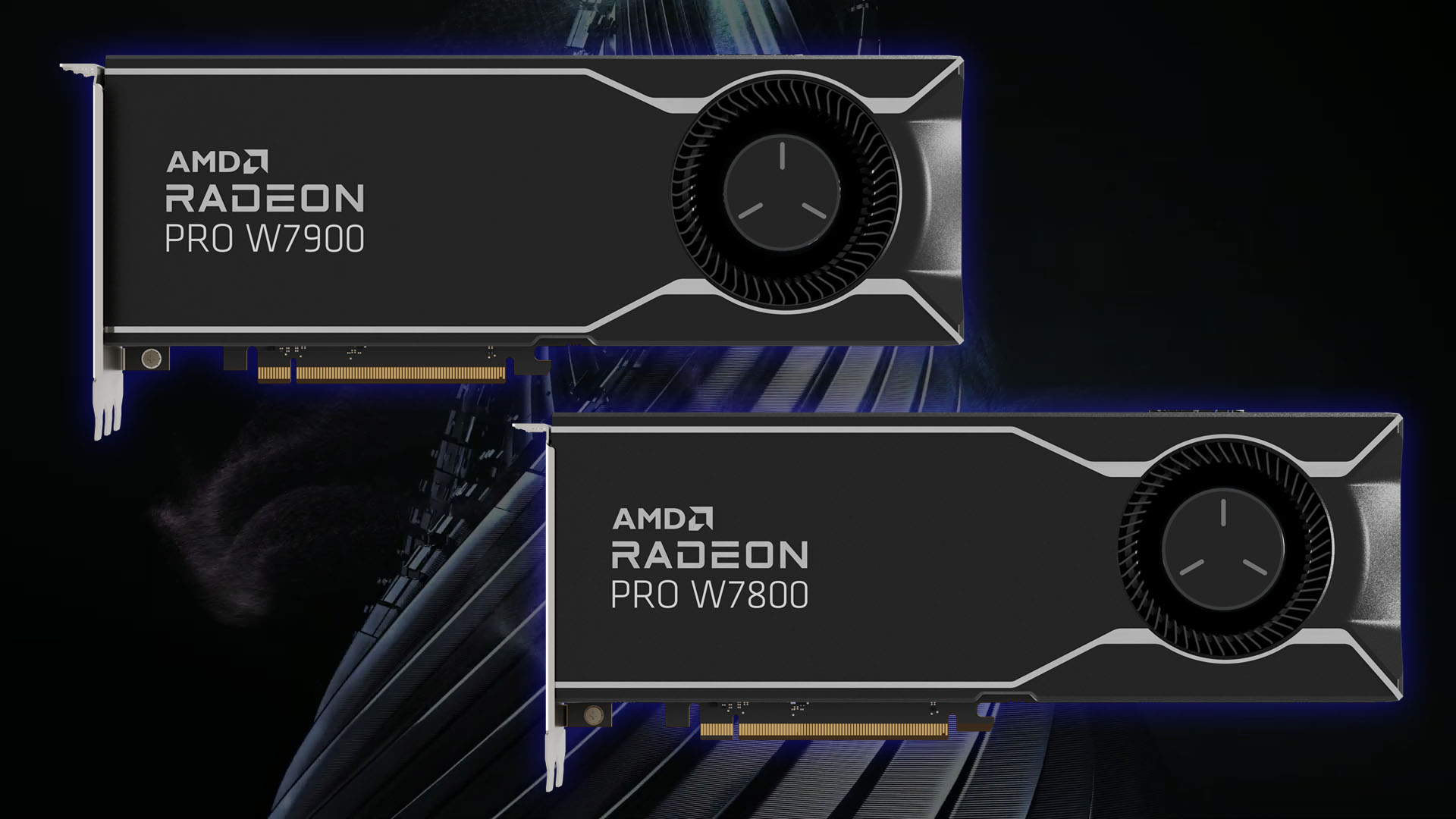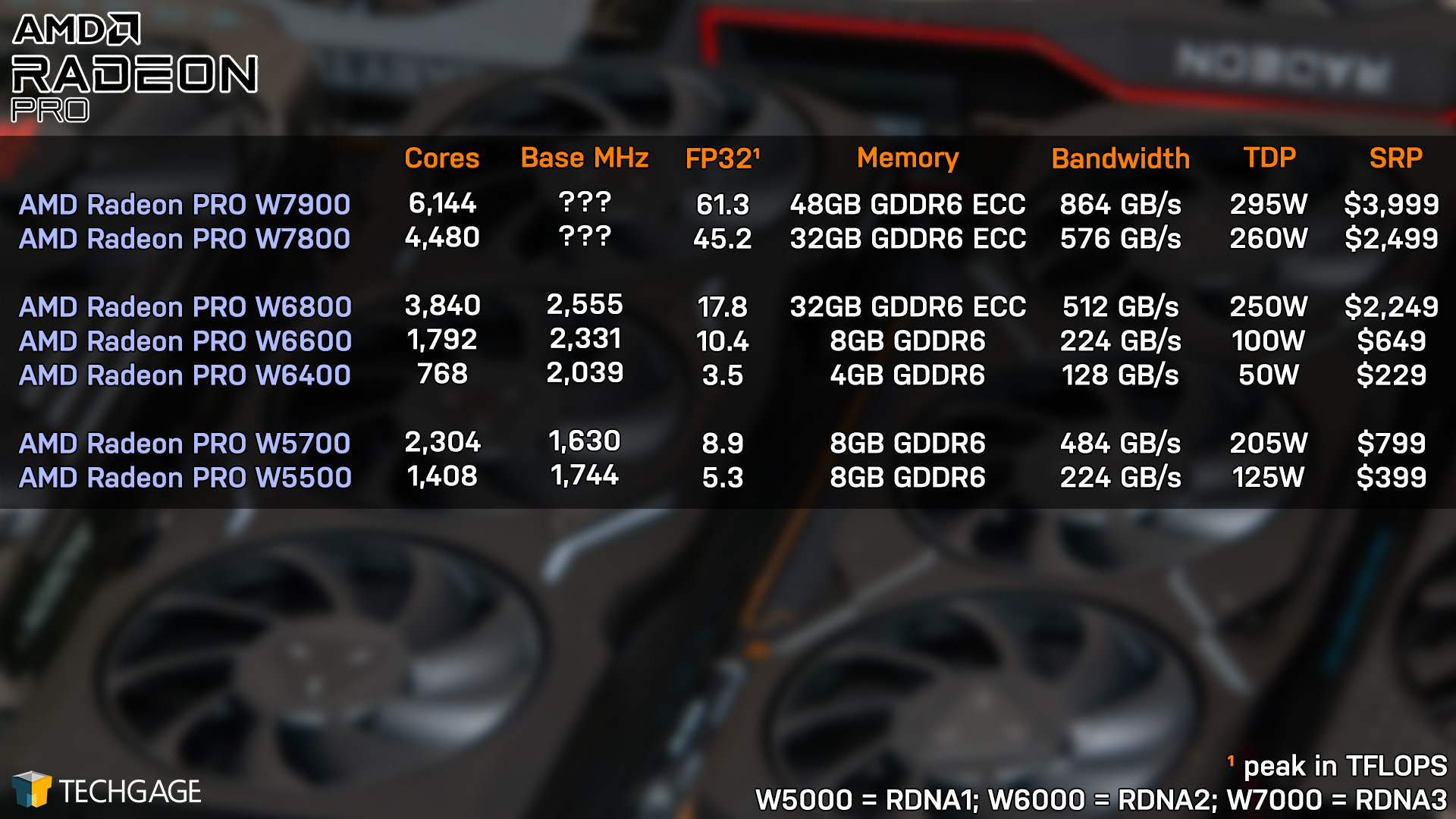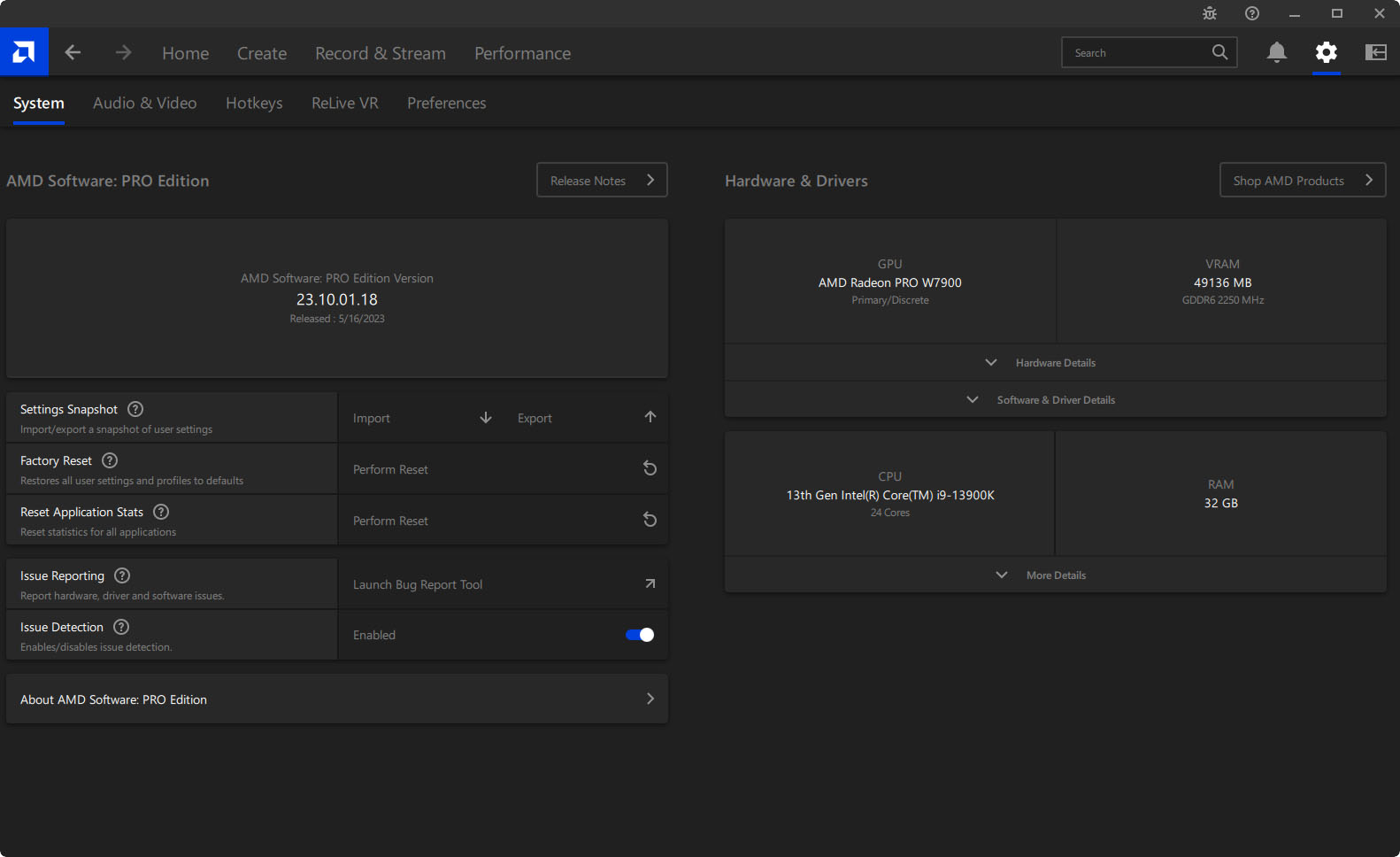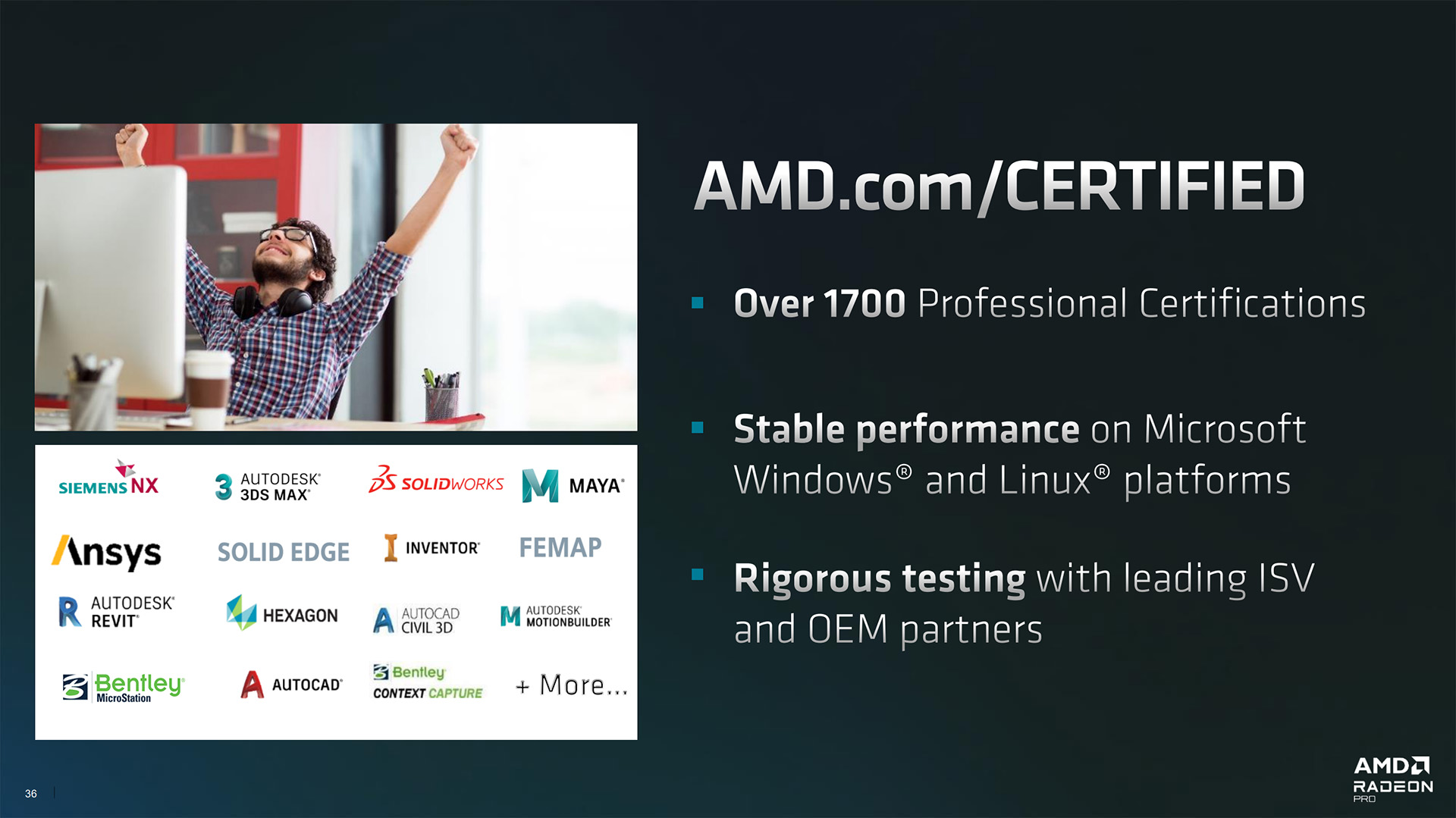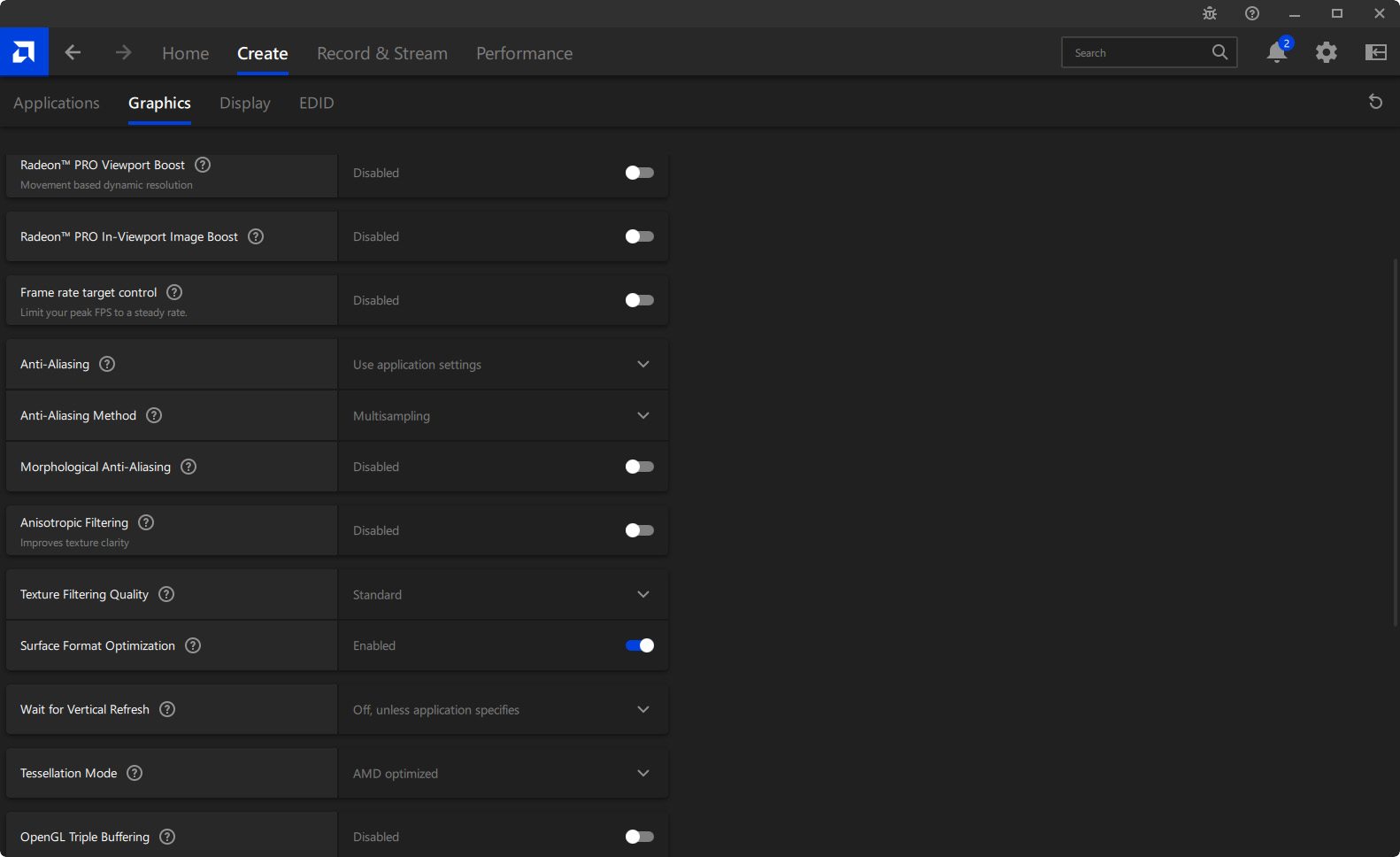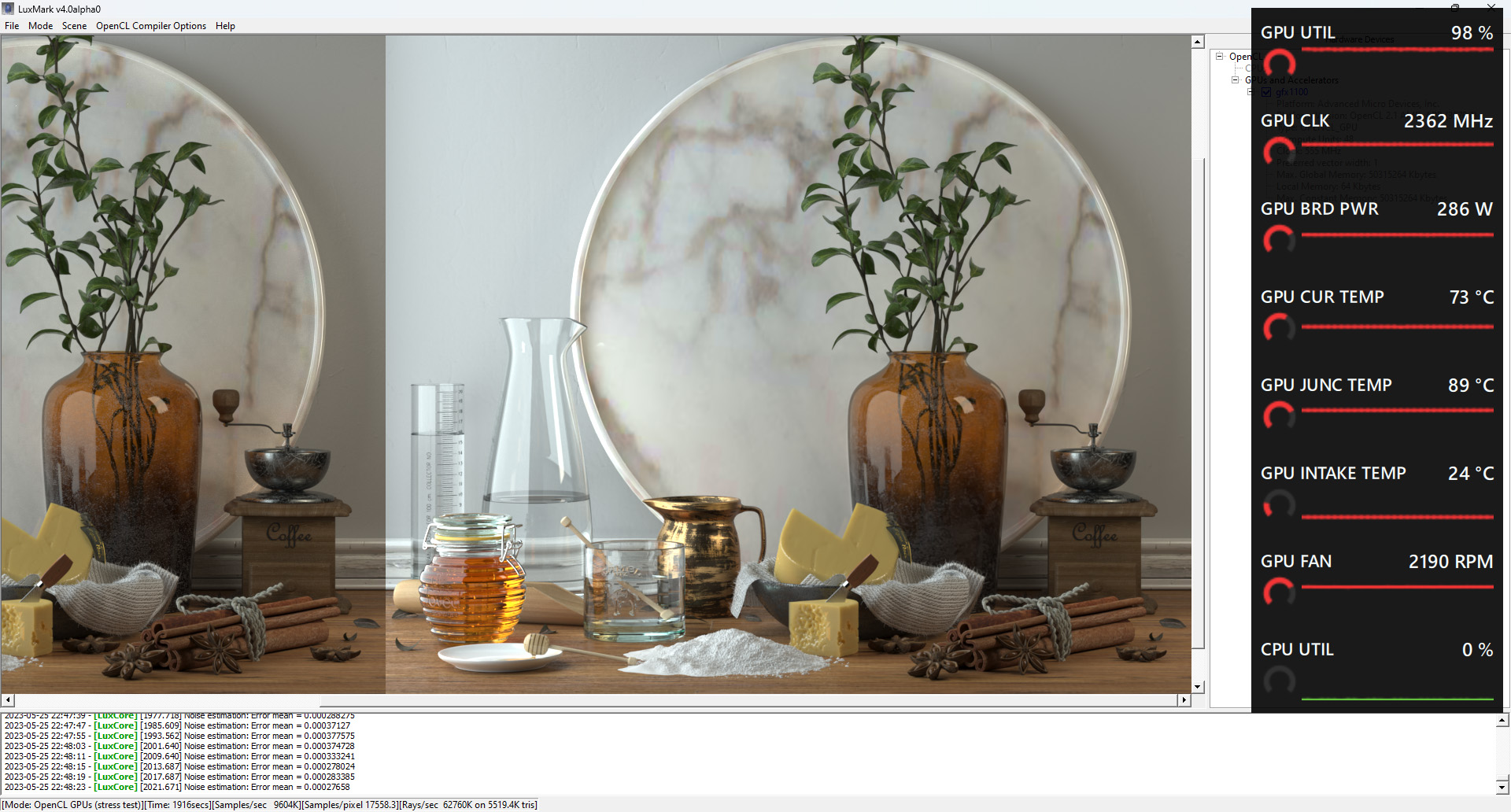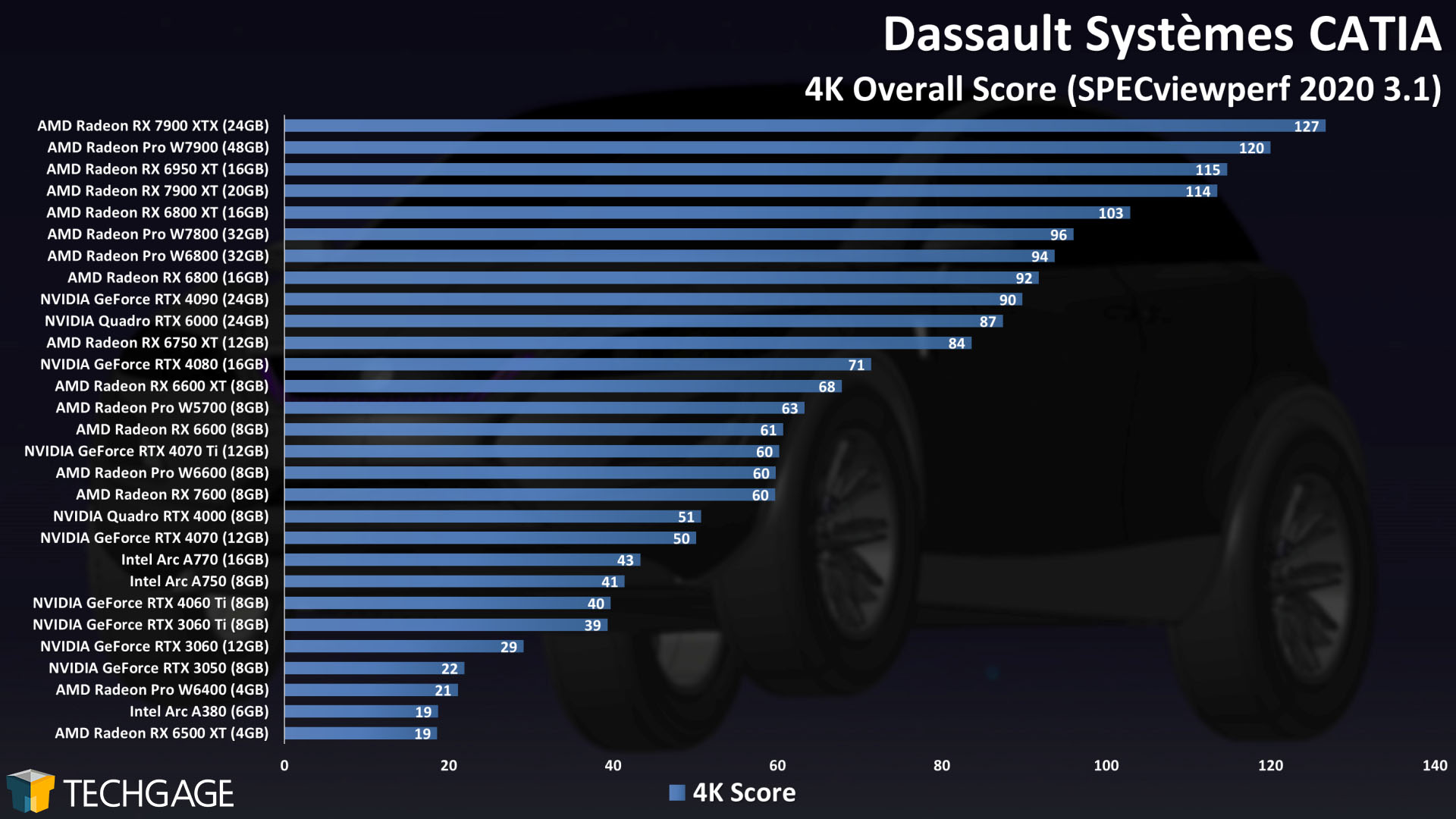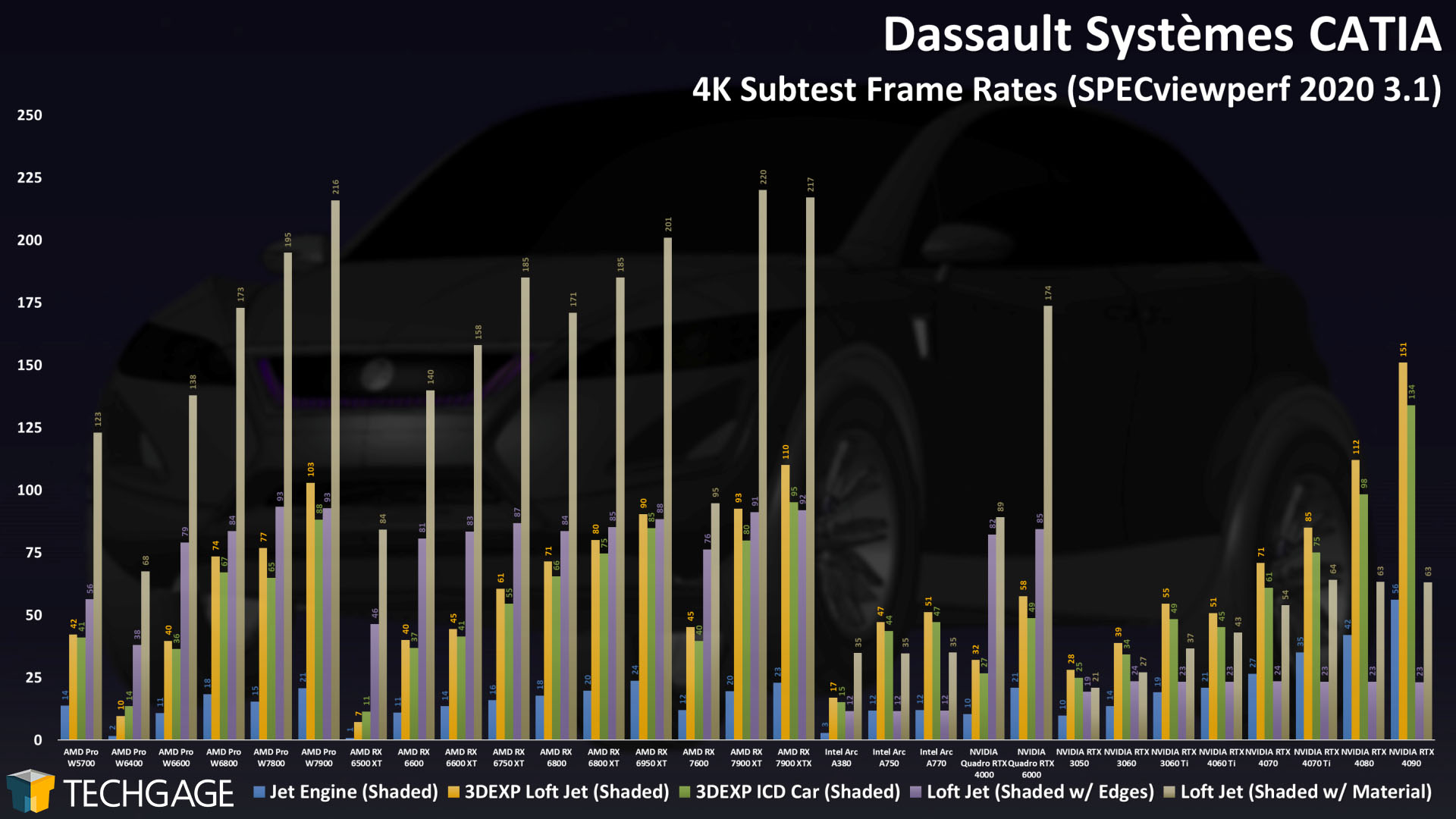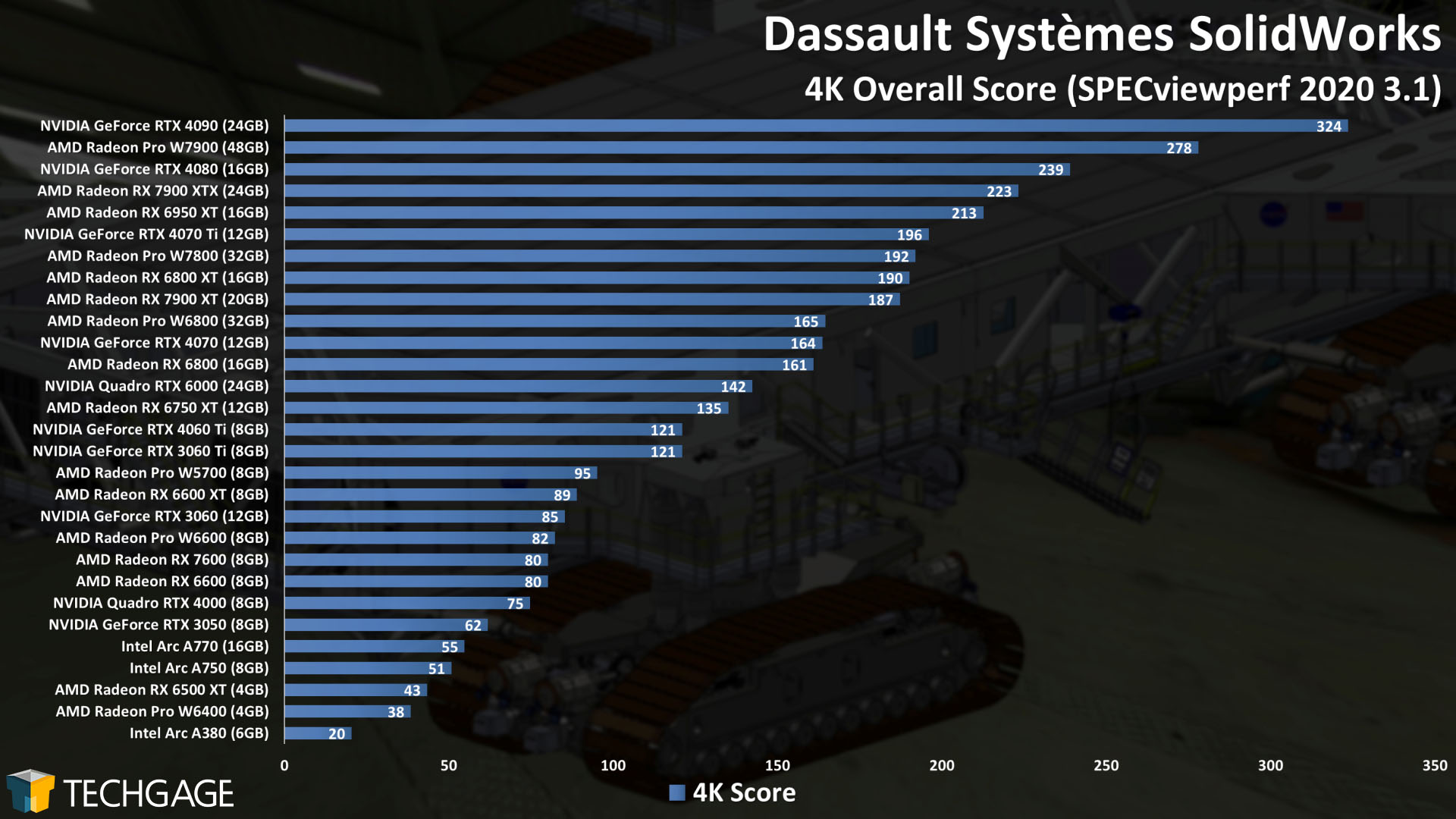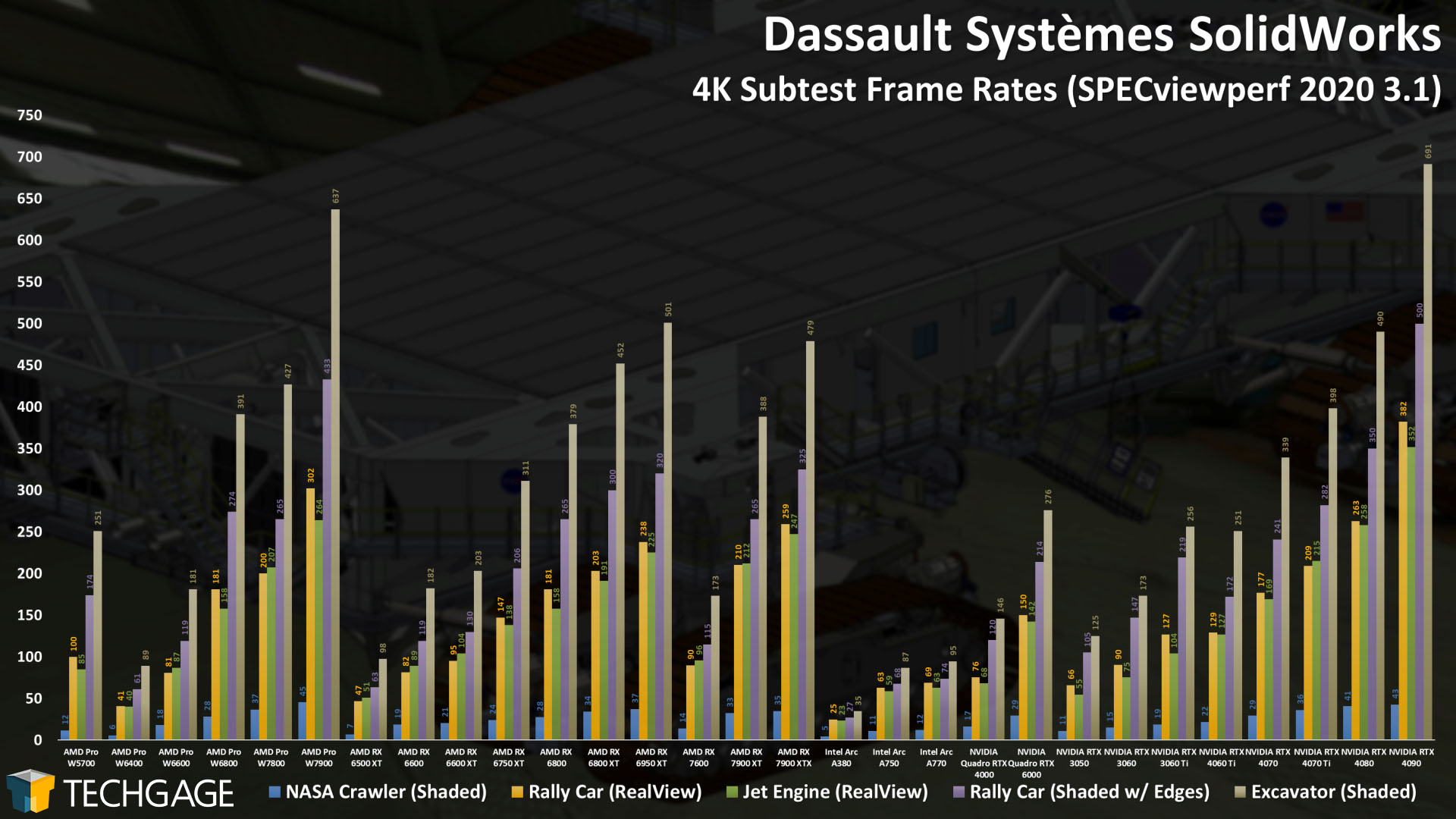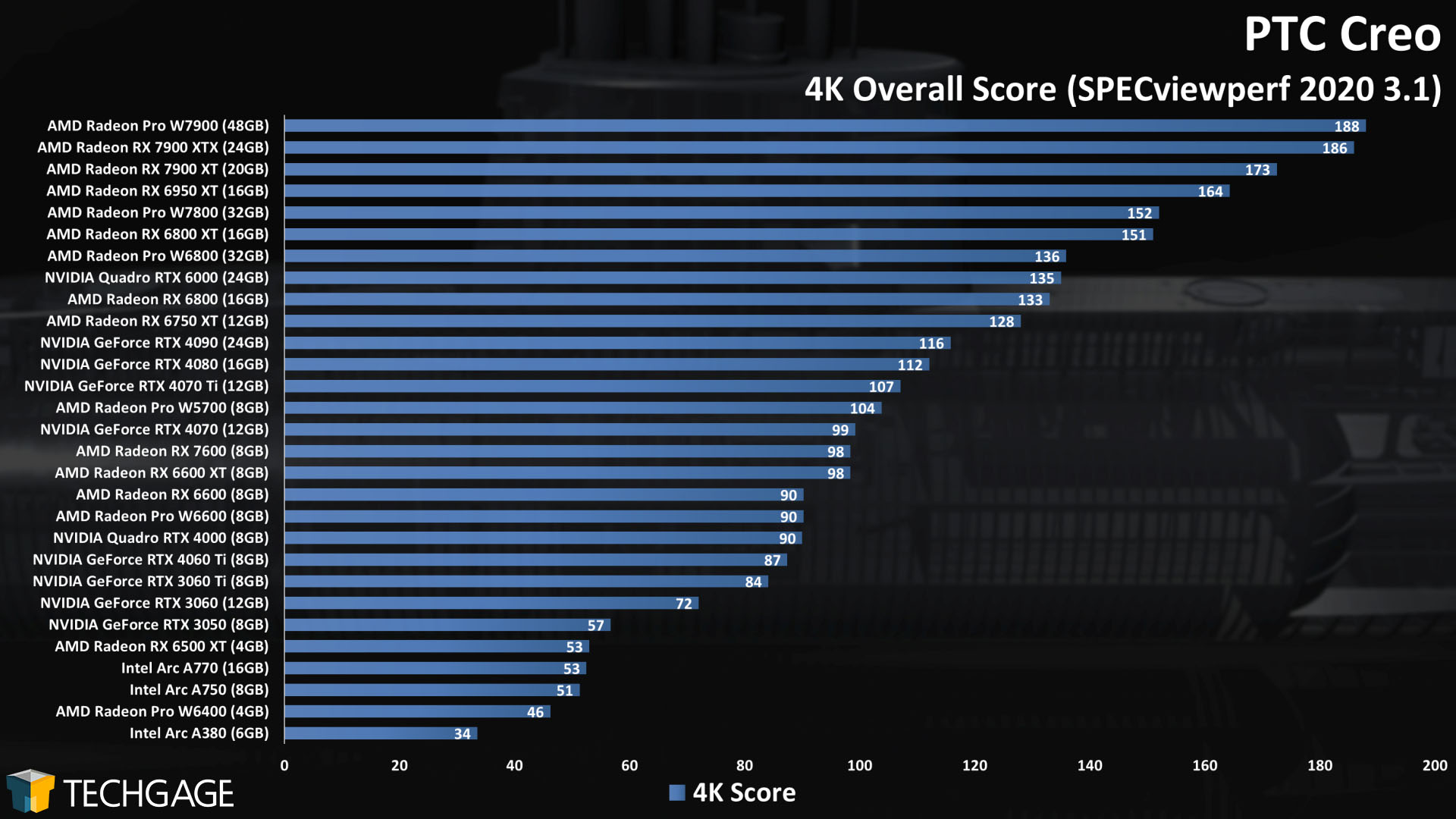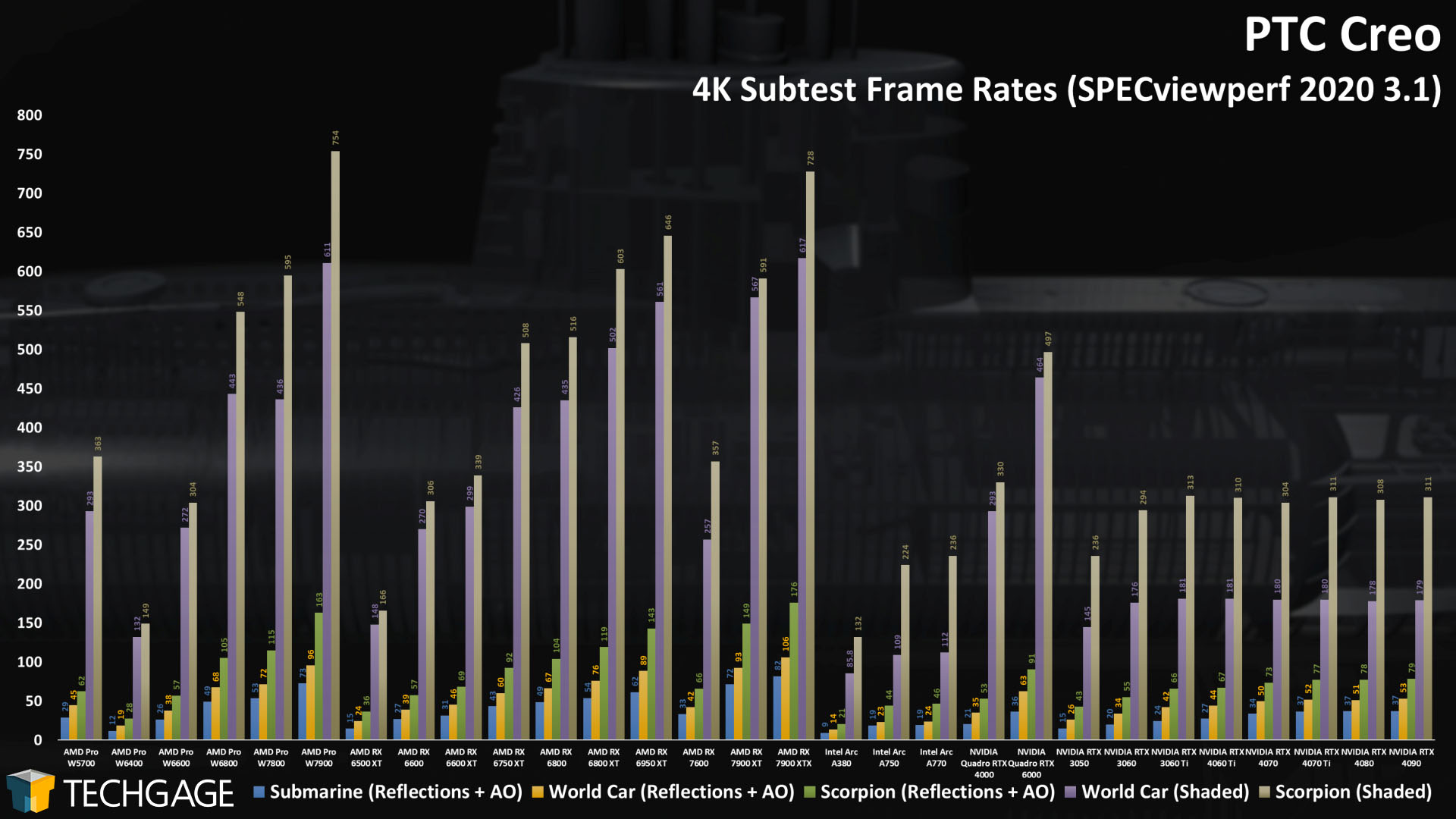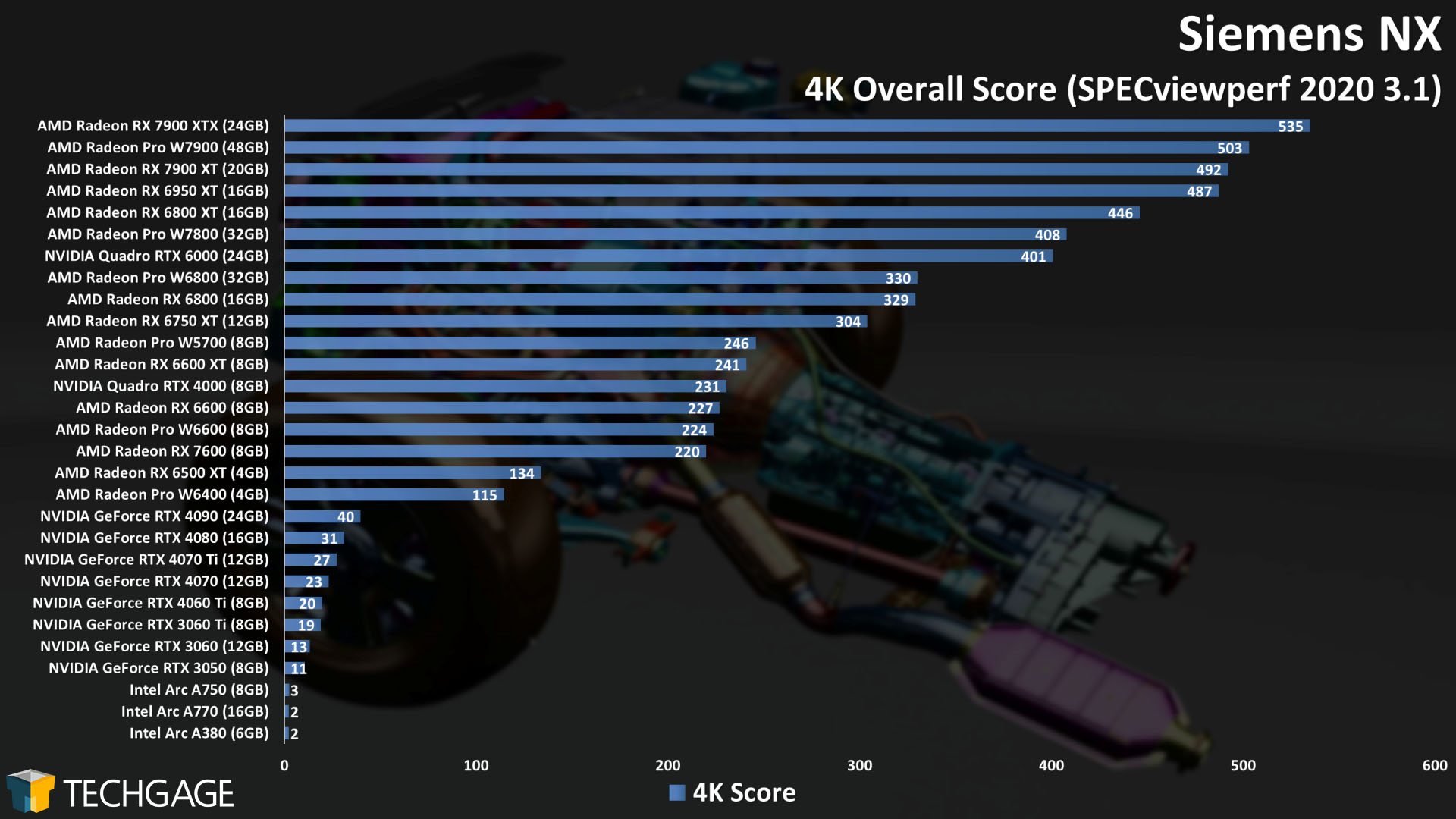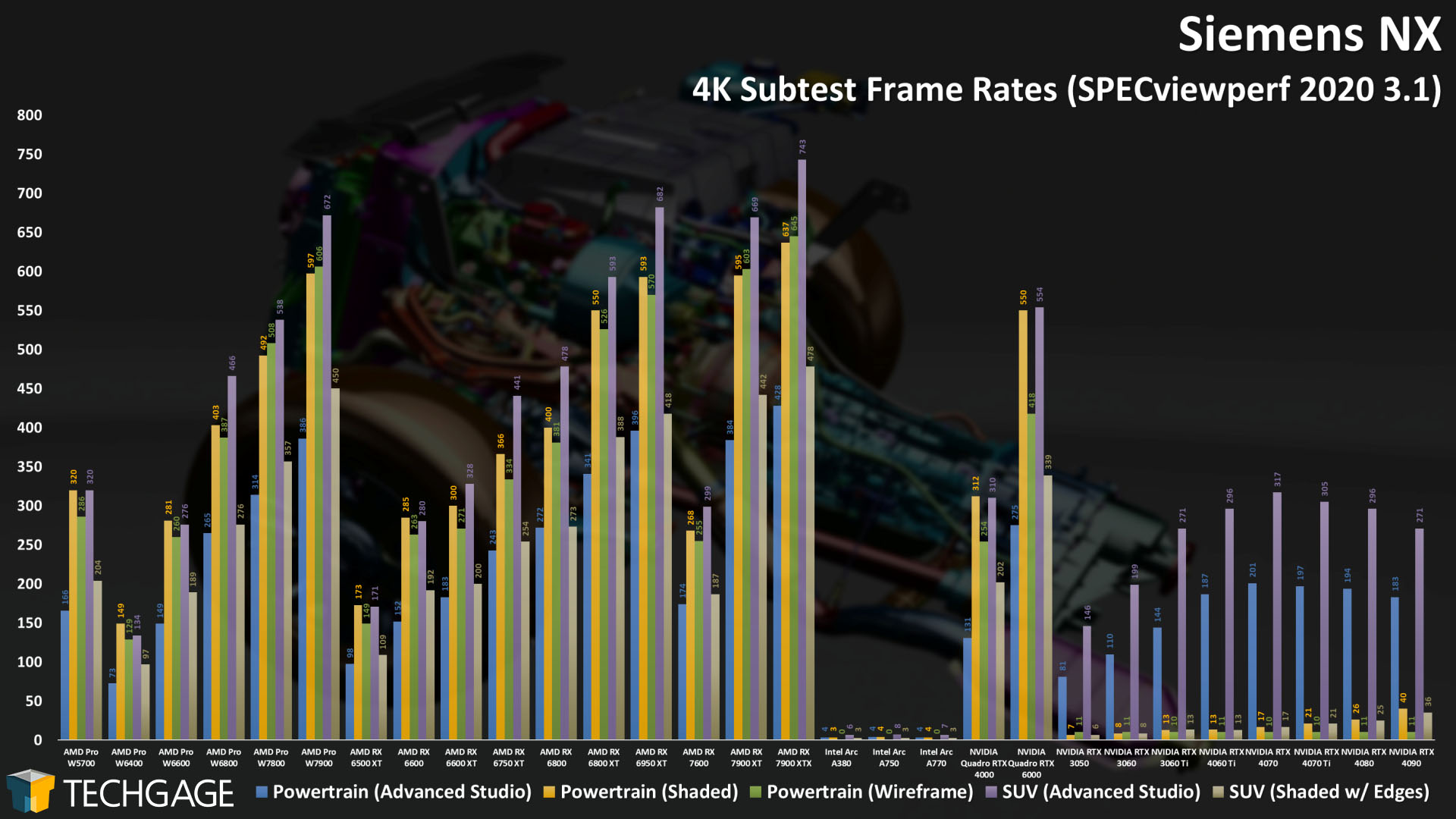- Qualcomm Launches Snapdragon 4 Gen 2 Mobile Platform
- AMD Launches Ryzen PRO 7000 Series Mobile & Desktop Platform
- Intel Launches Sleek Single-Slot Arc Pro A60 Workstation Graphics Card
- NVIDIA Announces Latest Ada Lovelace Additions: GeForce RTX 4060 Ti & RTX 4060
- Maxon Redshift With AMD Radeon GPU Rendering Support Now Available
AMD Radeon PRO W7800 & W7900 Workstation Performance Review
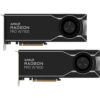
AMD’s Radeon PRO series of workstation GPUs has just been augmented with the first models infused with the company’s RDNA3 architecture. We’re taking a look at the high-end 32GB Radeon PRO W7800, as well as the even higher-end 48GB Radeon PRO W7900, across a wide-range of production workloads.
Page 1 – Intro; CATIA, SolidWorks, Creo & Siemens NX Performance
AMD’s latest generation Radeon PROs have just landed, and come to us in the form of the high-end Radeon PRO W7800, and even higher-end Radeon PRO W7900. This newest series is built on AMD’s RDNA3 architecture, which brings numerous performance improvements and feature updates.
One of the biggest changes at the hardware level to RDNA3’s high-end parts is the adoption of a chiplet design, which we’ve previously seen from the company’s Ryzen and EPYC-based processors, and also its RDNA3-based Radeon gaming series.
A chiplet design uses smaller dies to build the complete chip, which makes it easier to configure products for different performance targets, and also reduces the amount of loss from defects, as bigger dies increase the likelihood of encountering them.
Architectural improvements from RDNA3 that translate into noticeable perks include increased ray traced, AI, and video encode performance, AV1 encode support, higher memory bandwidth, and an updated display engine which adds DisplayPort 2.1 to support the beefiest resolutions (8K60 uncompressed; up to 12K60 w/ DSC).
While AMD’s gaming-focused Radeon lineup tends to feature a wide-range of models, AMD has kept things simple on the workstation side. The last generation RDNA2 series featured only three models, while the RDNA generation had only two. The “keep it simple” approach isn’t a bad one, but with the current lowest-end RDNA3 PRO card being priced at $2,499, we hope to see the mid-range taken care of at some point down the road.
The Radeon PRO W7900 is the first 9-series model since 2017’s WX 9100 that AMD has released, as the RDNA2 generation peaked with the W6800, and RDNA1, W5700. That means that the new second-from-the-top W7800 is the effective successor to the W6800, while the W7900 is introduced to target the ultra high-end.
One thing that’s interesting about the W7800 is that there is no comparable card to be found on the gaming side of Radeon. To date, AMD has released the RX 7900 XTX, RX 7900 XT, and most recently, the RX 7600. It’s not often that we see a performance gap like that in a lineup, or models found on the Radeon PRO side that are not found on the gaming side.
When this Radeon PRO series was first announced, AMD talked about what it looks at when it builds new workstation GPUs, with price/perf being a huge concern, as well as security and reliability constantly being improved and optimized. With these particular W7800 and W7900 Radeon PROs, AMD is catering to those who demand a high level of performance for the most demanding workloads.
It’s impressive to look at the W7800, with its huge 32GB framebuffer, and realize that it’s not even the top-end offering here. With the W7900, AMD took a huge framebuffer and made it massive, packing 50% more memory in. AMD’s Radeon Software shows the W7900 as having 49,136 MB of total available memory (enabling ECC cuts it down to 46,064 MB).
The framebuffers on both of these new Radeon PROs are so large, that most of our traditional benchmark tests won’t be able to take full advantage of them. For those who don’t want VRAM to be the limiting factor, GPUs like the Radeon PRO W7800 and W7900 offer a huge amount of freedom.
Overall, AMD targets these Radeon PROs at any workload and scenario that would benefit not just from lots of memory, but simply a faster GPU. It talks about 4K and 8K 12-bit workloads with the likes of Adobe Premiere Pro, After Effects, and DaVinci Resolve; on the game engine and rendering side, it talks of Autodesk’s 3ds Max and Maya, Maxon’s Cinema 4D and Redshift, Avid Media Composer, and more.
On the topic of Redshift, we had hoped that we’d be able to include a performance look at that renderer in this article, as Maxon has just released the first public beta that includes Radeon support. With this launch onslaught over, we’re planning to dig in next week.
AMD also touts the performance prowess of these new Radeon PROs for design and manufacturing, which could include tools like 3ds Max, D5 Render, and SolidWorks Visualize. As a testament to the fact that AMD’s made a notable impact in the workstation market, D5 Render, SolidWorks Visualize, and Maxon Redshift were all NVIDIA-exclusive until recently.
Other ideal intended workloads for these new PRO cards include architecture and engineering, with AMD once again talking about Lumion, a solution we hope to be able to test out down-the-road. Of course, beyond these workloads mentioned, any that require large framebuffers are naturally going to feel comfortable with these GPUs.
Before moving onto a look at performance, we wanted to draw attention to AMD’s Radeon Software: PRO Edition, included with the driver. This software has seen many updates over the past few years, and is worth exploring regardless of your intended workloads or workflows. Inside it, you can easily record and stream the desktop, adjust performance-related options, enable hotkeys and overlays, and more.
In the particular section seen above, there’s an option to enable Radeon PRO Viewport Boost, which will improve the performance of the interactive viewport in supported applications, as well as In-Viewport Image Boost to increase the crispness.
While it’s a feature that may cater to benchmarkers more than the typical user, we’ve come to appreciate the overlay feature, allowing us to monitor GPU clock speeds and temperatures while running benchmarks or stress tests:
Fortunately, if you have absolutely no interest in taking advantage of Radeon Software, you can install the driver without it. That said, it seems valuable enough to us to keep it installed, because you’re bound to find something in there that will benefit you.
With all of that covered, let’s move into a look at performance. We’re going to begin with a look at viewport performance in CATIA, SolidWorks, Creo, and Siemens NX on this page, and continue on with viewport performance for 3ds Max, Maya, Energy, and Medical on page two. On the third page, we’ll explore encoding and rendering, and finally, the fourth page will cover rendering tests and our conclusions.
Also, please note that not every GPU listed in the testbed table below is going to be found in every single graph, largely because there are too many GPU results to reasonably fit into one. If the chart you’re looking at is missing RTX 3060 Ti ~ RTX 3090 or RX 6600 XT, the result will likely be found in one of the aforementioned articles.
| Techgage Workstation GPU Test PC | |
| Processor | Intel Core i9-13900K (3.0GHz, 24C/32T) |
| Motherboard | ASUS ROG STRIX Z690-E GAMING WIFI CPUs tested with 2305 BIOS (March 10, 2023) |
| Memory | G.SKILL Trident Z5 RGB (F5-6000J3040F16G) 16GB x2 XMP-enabled w/ freq. set to DDR5-6000 (30-40-40-96, 1.35V) |
| AMD Graphics | AMD Radeon PRO W7900 (48GB; Beta 23.10.01.18) AMD Radeon PRO W7800 (32GB; Beta 23.10.01.18) AMD Radeon PRO W6800 (32GB; Enterprise 23.Q1.1) AMD Radeon PRO W6600 (8GB; Enterprise 23.Q1.1) AMD Radeon PRO W6400 (4GB; Enterprise 23.Q1.1) AMD Radeon PRO W5700 (8GB; Enterprise 23.Q1.1) AMD Radeon RX 7900 XTX (24GB; Adrenalin 23.4.1) AMD Radeon RX 7900 XT (20GB; Adrenalin 23.4.1) AMD Radeon RX 7600 (8GB; Beta 23.10.01.16) AMD Radeon RX 6950 XT (16GB; Adrenalin 23.4.1) AMD Radeon RX 6800 XT (16GB; Adrenalin 23.4.1) AMD Radeon RX 6800 (16GB; Adrenalin 23.4.1) AMD Radeon RX 6750 XT (12GB; Adrenalin 23.4.1) AMD Radeon RX 6600 XT (8GB; Adrenalin 23.4.1) AMD Radeon RX 6600 (8GB; Adrenalin 23.4.1) AMD Radeon RX 6500 XT (4GB; Adrenalin 23.4.1) |
| Intel Graphics | Intel Arc A770 (16GB; Arc 31.0.101.4311) Intel Arc A750 (8GB; Arc 31.0.101.4311) Intel Arc A380 (6GB; Arc 31.0.101.4311) |
| NVIDIA Graphics | NVIDIA GeForce RTX 4090 (24GB; Studio 531.61) NVIDIA GeForce RTX 4080 (16GB; Studio 531.61) NVIDIA GeForce RTX 4070 Ti (12GB; Studio 531.61) NVIDIA GeForce RTX 4070 (12GB; Studio 531.61) NVIDIA GeForce RTX 4060 Ti (8GB; Beta 531.93) NVIDIA GeForce RTX 3090 (24GB; Studio 531.61) NVIDIA GeForce RTX 3080 Ti (12GB; Studio 531.61) NVIDIA GeForce RTX 3080 (10GB; Studio 531.61) NVIDIA GeForce RTX 3070 Ti (8GB; Studio 531.61) NVIDIA GeForce RTX 3070 (8GB; Studio 531.61) NVIDIA GeForce RTX 3060 Ti (8GB; Studio 531.61) NVIDIA GeForce RTX 3060 (12GB; Studio 531.61) NVIDIA GeForce RTX 3050 (8GB; Studio 531.61) NVIDIA Quadro RTX 6000 (24GB, Quadro 531.61) NVIDIA Quadro RTX 4000 (8GB, Quadro 531.61) |
| Storage | WD Blue 3D NAND 1TB x3 (SATA 6Gbps) |
| Power Supply | Corsair RM1000x (1000W) |
| Chassis | Corsair 4000X Mid-tower |
| Cooling | Corsair H150i ELITE CAPELLIX (360mm) |
| Et cetera | Windows 11 Pro 22H2, Build 22621 Intel Chipset Driver: 10.1.19222.8341 Intel ME Driver: 2242.3.34.0 |
| All product links in this table are affiliated, and help support our work. | |
There’s an enormous amount of data ahead. For each of the eight viewport tests we’ve run, we’re providing both the overall score generated by SPECviewperf, as well as a breakdown of the subtests, and their respective frame rates. Those charts are cramped, and are meant to be viewed at their full 1080p resolution. The GPU positions do not change between these charts, so it will hopefully be easy enough to compare one GPU to another.
Lastly, it may appear odd that a Turing-based NVIDIA Quadro or two are included in these results, but those models are the most current that we have. We’re including them largely so the performance benefits expected out of NVIDIA’s workstation driver can be better understood. The GeForce RTX 4090 is the closest model hardware-wise to NVIDIA’s current-gen RTX 6000 Ada Generation, but it lacks the optimizations found in the professional driver.
Viewport Performance
PRO card or not, AMD’s Radeons dominate this CATIA test, taking over the top eight positions. When the last-gen Radeon PRO W6800 beats out NVIDIA’s top-end GeForce RTX 4090, which is technically superior, it really highlights how much driver optimization matters.
When we look at the subtest results, we can get an even better glimpse of how companies will prioritize one performance angle over another. AMD excels at the augmented Shaded modes, leaping far ahead of the competition, whereas NVIDIA accomplishes the same with the standard Shaded mode. Sometimes performance differences are ridiculously specific, which is why it’s a good idea to look at the subtest breakdown rather than rely only on the test’s overall score.
CATIA and SolidWorks might share the same developer, but the performance characteristics of each are quite different. AMD dominated the CATIA test, but NVIDIA delivers a tougher battle here. With the W7900 leaping so far ahead of the 7900 XTX, this software is a good example of where the pro-level driver optimizations prove beneficial.
Looking at the subtests, we can see that both AMD and NVIDIA deliver similar levels of performance most of the time, based on equivalent hardware. All of the subtests saw improvement on the W7900 vs. the gaming-focused RX 7900 XTX. When comparing W7900 to W7800, the top-end model offers notable gains in both the Shaded and RealView modes. Note that while gaming GPUs can utilize RealView via the SPECviewperf viewset, an actual workstation GPU will be required to use it in the native application.
As we saw with the CATIA test, AMD dominates the top of our Creo chart. Based on the comparisons we have here, we can see that the professional driver benefits both AMD’s and NVIDIA’s GPUs – but especially the latter. When a two-generation-old Turing-based RTX 6000 pulls ahead of the current-gen top-end RTX 4090, it proves that drivers have a lot to do with Creo performance on the NVIDIA side.
The subtests once again help us understand what’s going on under-the-hood. The entire tested GeForce lineup performs close to the same across-the-board, while the older Quadros leap ahead in the Shaded tests. As mentioned, AMD’s professional driver also boosts performance, but to a comparably modest extent. With strong Radeon performance here, the last-gen and mid-range RX 6600 XT outperforms the RTX 4090 in all but the Submarine Reflections + AO test.
Siemens NX requires a workstation-class GPU for the best experience on Intel or NVIDIA, and while that used to be the case for Radeon, it is no longer. Overall, AMD again performs great here, although we’d expect a tight battle from NVIDIA with a newer workstation GPU, as the two-generation-old RTX 6000 sits just behind the Radeon PRO W7800.
We haven’t talked much about Intel up to this point, but with a subtest graph like this, it’s hard to ignore the elephant in the room. Actually, an elephant could probably fill the chasm Intel’s created there. The same results show us that while the NVIDIA workstation driver improves performance across all of the viewport modes, it’s only the Advanced Studio mode that would deliver suitable performance on GeForce.
As mentioned earlier, the next page will take a look at viewport performance in 3ds Max, Maya, Energy, and Medical. Page three will handle encode tests, while the fourth and final page will cover rendering and our conclusions.
Support our efforts! With ad revenue at an all-time low for written websites, we're relying more than ever on reader support to help us continue putting so much effort into this type of content. You can support us by becoming a Patron, or by using our Amazon shopping affiliate links listed through our articles. Thanks for your support!




